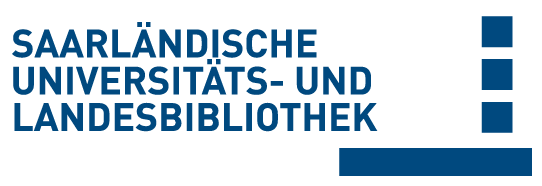Please use this identifier to cite or link to this item:
doi:10.22028/D291-23744 | Title: | Entwicklung und Charakterisierung eines hochtemperaturbeständigen Bindemittels für Dämmstoffe aus Glaswolle |
| Author(s): | Goedicke, Stefan |
| Language: | German |
| Year of Publication: | 2001 |
| SWD key words: | Sol-Gel-Verfahren Nanostrukturiertes Material Hochtemperaturfestigkeit Faserdämmstoff Metallorganische Polymere |
| DDC notations: | 660 Chemical engineering |
| Publikation type: | Dissertation |
| Abstract: | Nach dem Sol-Gel-Verfahren wurde ein anorganisch-organisches Hybridbindemittel („Nano-binder“) für Dämmstoffe aus Glaswolle entwickelt. Die Synthese des Nanobinders verläuft über säurekatalysierte Hydrolyse und Kondensation eines Gemischs aus Methyltriethoxysilan (MTEOS) und Tetraethoxysilan (TEOS) mit einem wäßrigen Kieselsol. Die Benetzung der Glasfasern und die Ausbildung von Klebfähnchen an den Kreuzungspunkten der Fasern wurde durch Variation des MTEOS : TEOS-Verhältnisses optimiert. Die zeitliche Entwicklung und Verteilung der unterschiedlichen Siloxanspezies in den Solsystemen mit ROR-Werten zwischen 0,2 und 0,8 (ROR-Wert = Stoffmengenverhältnis von Wasser zu hydrolysierbaren Alkoxygruppen) wurde mit 29Si-flüssig-NMR-Spektroskopie untersucht. Die daraus errechne-ten Kondensationsgrade zeigen eine gute Übereinstimmung mit entsprechenden theoreti-schen Werten. Die Ergebnisse von 29Si-NMR, PCS, SAXS, Karl-Fischer-Titration sowie von rheologischen Untersuchungen wurden in Relation gesetzt und Strukturmodelle sowohl für den flüssigen Nanobinder als auch für die feste Bindermatrix diskutiert. Kondensationsgrad, Gelierzeit und Viskosität des Nanobinders wurden an die praktischen Anforderungen in der Dämmstoffproduktion angepaßt, so daß ein Einsatz des Nanobinders auf industriellen Pro-duktionsanlagen ermöglicht wurde. So konnten auf Produktionsanlagen der Fa. Pfleiderer Dämmstofftechnik mit dem Nanobinder Dämmatten und Rohrschalen hergestellt werden, die zur Einordnung in die Baustoffklasse A1 (nicht brennbar nach DIN 4102) zugelassen wurden. The sol-gel process was used for the development of an inorganic-organic hybrid binder („nano binder“) for glass wool insulating materials. The synthesis of the nano binder is carried out by acid-catalyzed hydrolysis and condensation of a mixture of methyltriethoxysilane (MTEOS) and tetraethoxysilane (TEOS) with an aqueous silica sol. The wetting of the glass fibres and the formation of adhesive films at the intersections of the fibres was optimized by variation of the MTEOS : TEOS ratio. The development and distribution of the different silo-xane species in the sol systems with ROR values between 0.2 and 0.8 (ROR value = molar ratio water : hydrolyzable alkoxy groups) was examined by 29Si NMR spectroscopy. The de-grees of condensation calculated from these results show good correspondence with theore-tical values. The results of 29Si NMR, PCS, SAXS, Karl Fischer titration as well as rheological measurements were correlated in order to discuss structural models for the liquid nano bin-der solution and for the solid nano binder matrix. The degree of condensation, gelling time and viscosity of the nano binder was adapted to the requirements in the industrial production of insulating materials. Thus on production plants of the Pfleiderer Dämmstofftechnik where normally phenolic resins are manufactured insulating mats and pipe insulating shells could be produced with the nano binder. Those materials were classified A1 (incombustible according to DIN 4102). |
| Link to this record: | urn:nbn:de:bsz:291-scidok-756 hdl:20.500.11880/23800 http://dx.doi.org/10.22028/D291-23744 |
| Advisor: | Schmidt, Helmut |
| Date of oral examination: | 23-Nov-2001 |
| Date of registration: | 7-Jun-2002 |
| Faculty: | SE - Sonstige Einrichtungen |
| Department: | SE - INM Leibniz-Institut für Neue Materialien |
| Collections: | INM SciDok - Der Wissenschaftsserver der Universität des Saarlandes |
Files for this record:
| File | Description | Size | Format | |
|---|---|---|---|---|
| GoedickeDiss.pdf | 1,36 MB | Adobe PDF | View/Open |
Items in SciDok are protected by copyright, with all rights reserved, unless otherwise indicated.

